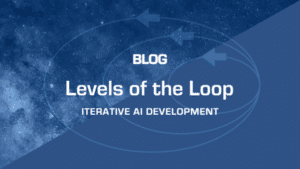Ontologies are critical for organizing and structuring information in various domains, from healthcare to finance to e-commerce. Creating an ontology can be a challenging and time-consuming task, often requiring significant resources and expertise. Recent advances in artificial intelligence (AI) and natural language processing (NLP) have made it possible to create ontologies on demand using language model models (LLMs) and knowledge graphs.
LLMs, such as GPT-4, Llama, and Bard, are powerful models that can process and analyze large amounts of text data. Knowledge graphs, on the other hand, are databases that organize and store knowledge in a structured format. Together, these technologies can be used to create ontologies on demand by automating many of the steps involved in the process.
Here are some steps that Jaxon takes to create ontologies using LLMs and knowledge graphs:
Step 1: Collect Relevant Text Data
The first step is to collect relevant text data from various sources such as websites, research papers, and other documents. This can involve web scraping or using APIs to gather data from various sources.
Step 2: Preprocess the Text Data
Once the text data has been collected, it needs to be preprocessed to remove any noise and irrelevant information. This can involve techniques such as tokenization, stemming, and lemmatization to normalize the text and make it machine-readable.
Step 3: Extract Entities and Relationships
The next step is to use LLMs and knowledge graphs to extract entities and relationships from the preprocessed text data. Entities can include people, places, and things, while relationships can be between entities, such as “works for” or “is a type of”.
Step 4: Map Entities and Relationships to Ontological Concepts
Once entities and relationships have been extracted, they need to be mapped to ontological concepts. This involves assigning a unique identifier to each entity and relationship and defining their properties. This step helps to ensure that the ontology accurately reflects the domain of interest.
Step 5: Validate and Refine the Ontology
Finally, the ontology needs to be validated and refined to ensure that it accurately reflects the domain of interest. This can involve feedback from subject matter experts or iterative refinement based on the performance of the ontology in a specific application.
Overall, using LLMs and knowledge graphs can streamline the process of ontology creation by automating many of the steps involved and leveraging their ability to process large amounts of text data. With the help of these technologies, Jaxon can create ontologies on demand and help our customers stay ahead in highly competitive landscapes.



